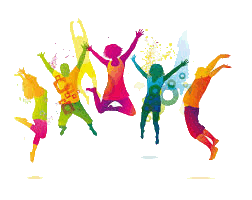טל שפיר
Movement has always been a driving force in my life. I have enjoyed challenging myself motorically from as early as I can remember myself, and training in various forms of physical activity, from gymnastics and dance to Aikido and Yoga, has always made me feel good. Thus, after graduating law school at the Hebrew University of Jerusalem and becoming a lawyer, I decided to follow my heart, and I studied dance-movement (psycho)therapy in University of Haifa.
Several years of work with children with neurological disorders and the wish to improve treatment, led me back to school to complete my Masters and PhD in motor control in University of Michigan School of Kinesiology. Experiencing the psychotherapeutic impact of dance and movement on both myself and my clients, and wanting to understand ‘how does it work’, I continued with two postdoctoral fellowships: in affective neuroscience at the Molecular and Behavioral Neuroscience Institute, and in brain-behavior interactions in infancy at the Center for Human Growth and Development, both at University of Michigan. This background enabled me to develop my unique interdisciplinary research interest in movement-emotion interaction and its underlying brain mechanisms, behavioral expressions, and therapeutic applications. Through this research I aim to strengthen and expand our knowledge regarding the theoretical basis for movement-based interventions, and to provide the scientific approval and evidence-based data for their effects. This research is the topic of my TEDx talk: How your Body Affects your Happiness, which has over 316,000 views, and my 2016 paper which was chosen by the Israeli business newspaper ‘The Marker’ as one of the 26 most inspiring studies of that year.
In 2017 I decided to expand into new horizons my knowledge of human movement, and in parallel to my academic work, I studied, and in 2019 was certified, as an expert in two movement approaches: Laban/Bartenieff Movement System (LBMS), and the Anat Baniel Method: Neuromovement.
LBMS is a method for describing, analyzing, interpreting and understanding human movement, and its interactions with other aspects of life. I have been using LBMS as a basic tool in my research, and recently have used this tool together with my research findings, to develop with two German colleagues, a new CBT (Cognitive Behavioral Therapy) methodology that incorporates embodied cognition concepts.
The Anat Baniel Method: Neuromovement is a method for increasing neuroplasticity and upgrading the brain’s function through movement. This method is based on the Feldenkrais method and the nine essential principles for its application that Anat Baniel has defined and refined. Being impressed with the overwhelming success of practitioners of this method to improve the condition of people suffering from various neurological disorders, I have decided to invest more of my time in it: In 2020 I stopped my regular academic teaching and started to practice this method as a practitioner. In addition, I have taken all of the continuing education courses that Baniel has offered, as well as started my Feldenkrais certification studies to increase my knowledge and understanding of the origin of her method. Practicing this method not only gives me huge satisfaction when I see its effects on my clients, but also provides me with the necessary hands-on experience and deep familiarity with the method, needed for research. Once I feel that I gained enough experience and deeper knowledge of this method, I plan to start researching its theoretical basis and underlying brain mechanisms, as well as scientifically demonstrate its effects using evidence-based studies
talshafir
